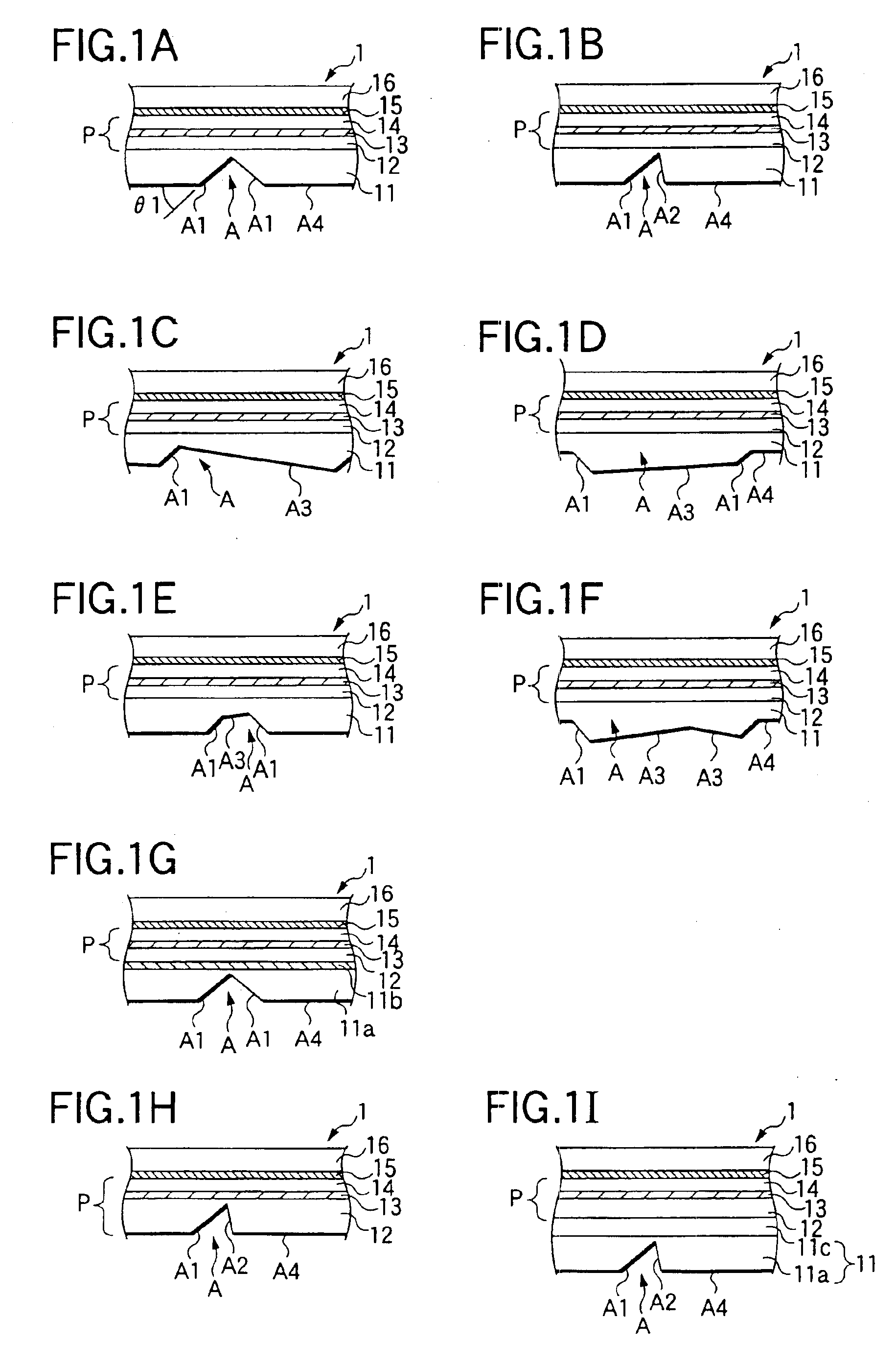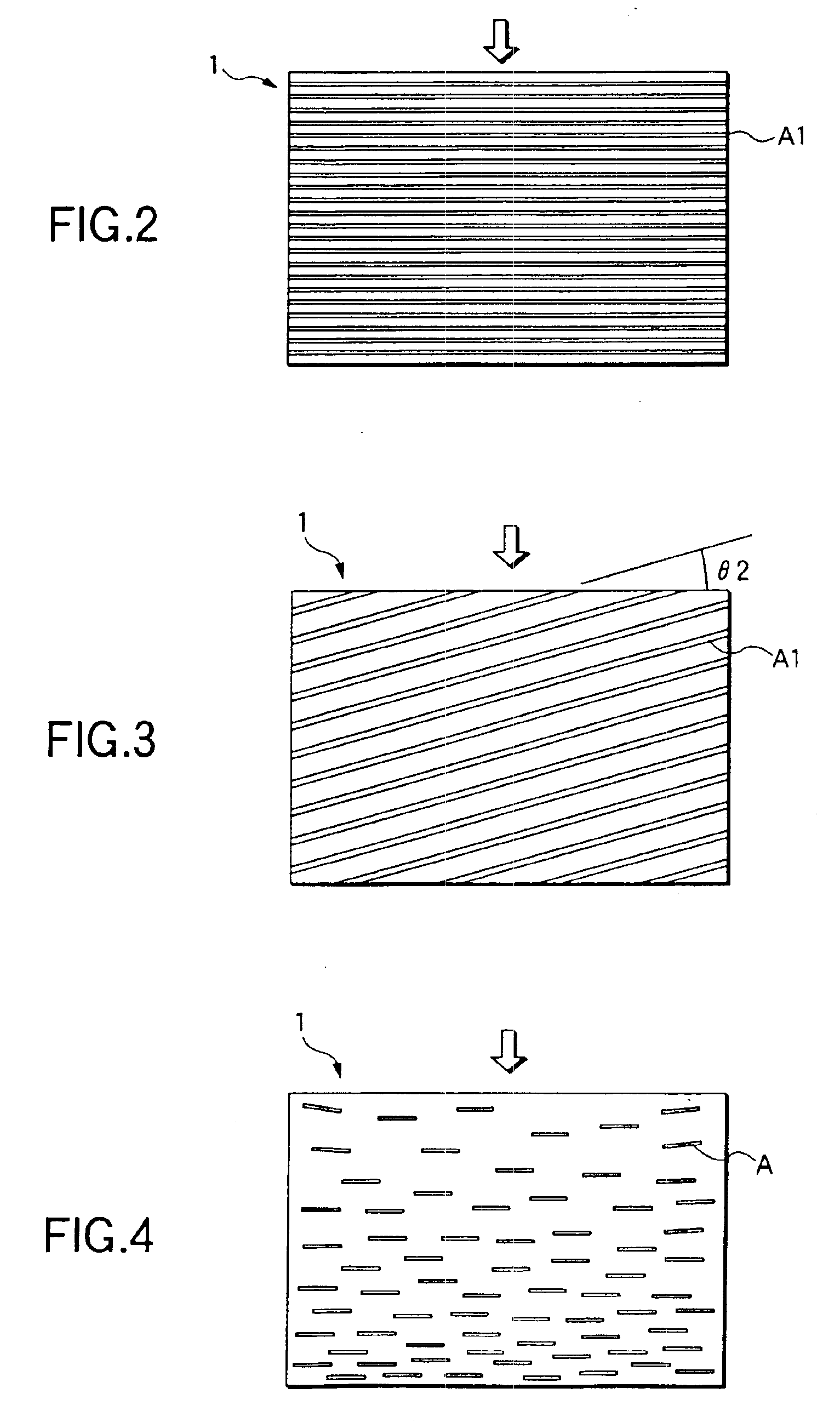Optical path changing polarizer
- Summary
- Abstract
- Description
- Claims
- Application Information
AI Technical Summary
Benefits of technology
Problems solved by technology
Method used
Image
Examples
example 1
[0083]An acrylic ultraviolet-curable resin (ARONIX UV-3701 made by TOAGOSEI Co., Ltd.) was dropped by a dropper so that a mold processed into a predetermined shape in advance was filled with the acrylic ultraviolet-curable resin. A triacetylcellulose (TAC) film (having a saponified surface) 80 μm thick was quietly set on the acrylic ultraviolet-curable resin and then brought in close contact with the acrylic ultraviolet-curable resin by a rubber roller so that a surplus of the resin and air bubbles were removed. Then, the acrylic ultraviolet-curable resin containing the TAC film was irradiated with ultraviolet rays by a metal halide lamp so that the resin was hardened. Then, the hardened resin was stripped off from the mold and cut into a predetermined size. Thus, a transparent protective film was obtained on the TAC film having a refractive index of 1.49. The transparent protective film had an optical path changing means layer with a refractive index of 1.52.
[0084]Then, the transpa...
example 2
[0087]An optical path changing means layer was formed in the manner similar to that in Example 1 except that the TAC film was replaced by a polycarbonate (PC) film 75 μm thick. Then, the optical path changing means layer was stripped off from the PC film. Thus, an optical path changing film was obtained. TAC films 80 μm thick were bonded to both surfaces of a polyvinyl alcohol polarizing film through a polyvinyl alcohol adhesive agent to thereby form a polarizer. The optical path changing film was bonded to one surface of the polarizer through an acrylic adhesive layer having a refractive index of 1.51 so that the optical path changing means layer was positioned outside. An acrylic adhesive layer having a refractive index of 1.51 was attached to the other surface of the polarizer. The polarizer was covered with a strip sheet. Thus, an optical path changing polarizer was obtained. Then, a reflection-transmission double type liquid-crystal display device was obtained in the manner sim...
example 3
[0088]A different mold was used to obtain an optical path changing film having a plurality of optical path changing means (FIG. 1B). The plurality of optical path changing means had prism-like concave portions disposed at intervals of a pitch of 210 μm. Each of the prism-like concave portions had an optical path changing slope A1, and a steep slope A2. The inclination angle of each of the optical path changing slopes A1 was about 42 degrees. The projected width of each of the optical path changing slopes A1 on a plane of the polarizer was in a range of from 10 to 16 μm. A vertex angle between the optical path changing slope A1 and the steep slope A2 was about 70 degrees. The optical path changing means further had flat surfaces A4. The projected area of the flat surfaces A4 on the polarizer plane was not smaller than 10 times as large as the total projected area of the optical path changing slopes A1 and the steep slopes A2 on the polarizer plane. An optical path changing polarizer ...
PUM
 Login to View More
Login to View More Abstract
Description
Claims
Application Information
 Login to View More
Login to View More - R&D
- Intellectual Property
- Life Sciences
- Materials
- Tech Scout
- Unparalleled Data Quality
- Higher Quality Content
- 60% Fewer Hallucinations
Browse by: Latest US Patents, China's latest patents, Technical Efficacy Thesaurus, Application Domain, Technology Topic, Popular Technical Reports.
© 2025 PatSnap. All rights reserved.Legal|Privacy policy|Modern Slavery Act Transparency Statement|Sitemap|About US| Contact US: help@patsnap.com



